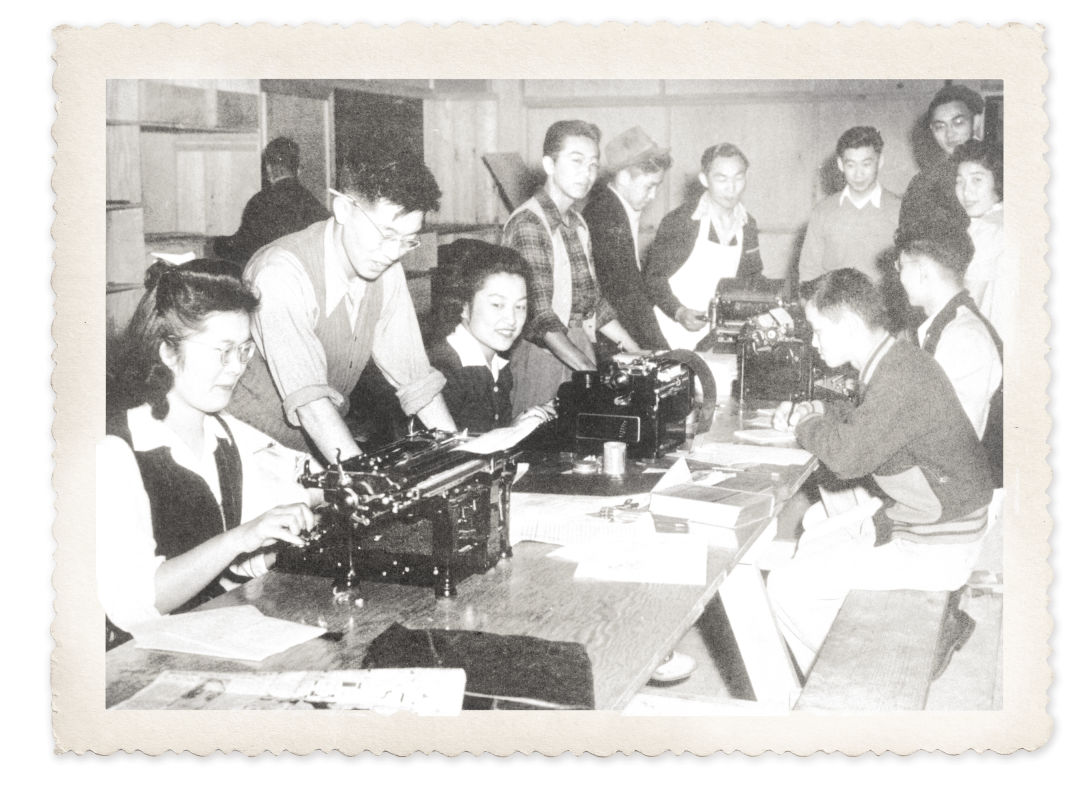Remembering Portland's Japanese Internment

“Press Day” at the internment center’s newspaper, the Evacuazette, May 1942
In Japanese, there’s a word for determined silence: gaman, or to endure the unbearable with grace.
Seventy-five years ago, the US government ordered around 3,700 Japanese Americans from Oregon and southern Washington to surrender themselves at the Portland Expo Center. Inside, livestock exhibition halls became makeshift living quarters. Cow stanchions and stall doors had been hurriedly stripped, plywood flooring laid down over the dirt, walls whitewashed, with horsehairs poking through the fresh paint. For many, gaman was the path to survival.
“It was probably the hottest summer going,” recalls Jim Tsugawa, now 84, a Beaverton native who was 10 when he spent four months at the Portland Assembly Center before being transferred to more permanent holdings in Idaho. “The fire department thought they would hose down the hallways, but the water dripped through, and the manure smell came up strong.”
President Franklin D. Roosevelt had signed Executive Order 9066 in February, authorizing the forced removal of citizens of Japanese ancestry from the “military area” of the West Coast. The streets of the nihonmachi, Portland’s Japanese American community in Old Town, fell silent.

A family arrives at the Expo Center’s internment facility.
Still, among the surviving generation, many of whom were children at the time, memories of communal shower stalls, barbed-wire fences, and armed guards might be overshadowed by long days of pickup sports games and unsupervised freedom.
“Thinking back, our parents really went through a lot of hardship,” says Hillsboro’s Aya Fujii, who at 15 spent three weeks interned at the Expo Center with her family before a transfer to a tent camp in Eastern Oregon. “But we were just teenagers, and we had to work on the farm every day before and after school, and once we got into the Assembly Center we didn’t have to do any of that. So we thought it was fun.”
“It was the first time we saw so many Japanese people, because we lived in a community where there were very few,” adds her sister Taka Mizote, 18 at the time of her incarceration. “We tolerated, and we said, if this is what we have to do, it’s what we’ll do.”
“There aren’t many survivors left,” says Lynn Fuchigami, executive director of the Oregon Nikkei Endowment. “The importance is to pay tribute to them, but also make a clear statement that there’s a commitment for this legacy to live on. With everything that’s going on today, there’s a commitment to never let anything like this happen again.”



